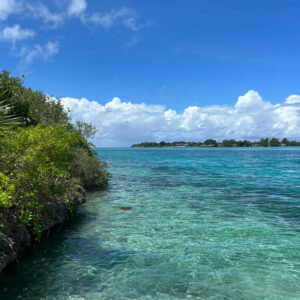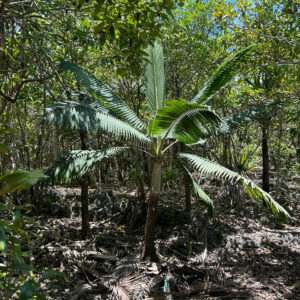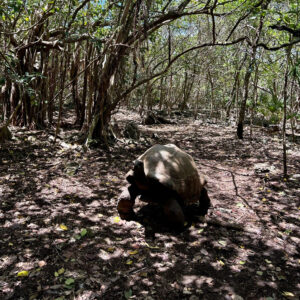This November I had the opportunity to travel around the island of Mauritius, a long last bucket list destination of mine. What I discovered, was not only the rich culture built by a mix of cultures who migrated to the island and the amazing beaches that drawn tourists from all over the world, but a story of ecological destruction that dates back to the colonial times and a beacon of hope on the regenerative work of Mauritius Wildlife Foundation.
The 2000 square kilometers of mainland Mauritius Is today marked by the ecological destruction of the natural habitat, from the exploitation of the ebony forests in the 18th century to the sugar plantation, that drove all but one of the island’s endemic species of mammals to extinction before the end of the 19th century.

One of the three endemic bat species of the island is the only surviving mammal native to the island. All of the rest, joined by numerous reptiles and bird species, were completely gone even before humans started to understand the interconnection between species in nature through the writings of Humboldt.
The most iconic extinct animal from the island is the Dodo, completely wiped out from the face of the earth in a hundred years of Dutch colonization. Now only available in fluffy teddy bear format in gift shops around the island. The ecological destruction went on for more centuries, led by the French and later the British. Turning almost every square meter of forest that was suitable for plantation into sugar.
It’s sad and ironic how humans can turn a beautiful forest into such a crappy product as sugar, but at least the island rhum is still pretty good. The truth is that the whole main island would be likely a waste land today, if it wasn’t for the marvelous beaches that bring tourism revenues and move the economy, despite the whole sugar industry gone almost bankrupt.
Pay attention driving in land and you will notice countless ruins of old sugar mills and hardly ever a standing forest that is not on high elevation.
The darkness of the colonial days now sees the light of the beautiful work done by the Mauritius Wildlife Foundation, which in the 80s started as a private NGO to try to stop more species from going extinct. Among the impressive achievements in their impact report is saving the Mauritius Kestrel, the forest dwelling falcon, from extinction, through assisted reproduction of the four last remaining individuals, including one solo female, to over 600 individuals, turning the Kestrel into the national symbol of the island.

On our trip we had the opportunity to visit their showcase project of regenerating, the Ile aux Aigrettes, declared a national reserve in 1965 after serving as a military base during WWII and suffering the devastating effects of the introduction of foreign species and deforestation as did the main island.
Ile Aux Aigrettes, with its 27 hectares, was small enough to function as a regenerative lab for the main island. Today the island is almost fully restored to its original glory giving the visitor a sense of what the main island of Mauritius used to look like before the Dutch arrived in Turtle Bay, and fed their hungry sailors with all the turtles they could get, driving all local endemic turtle species to extinction. Speaking of turtles, that’s one of the most remarkable stories you will hear while visiting the island guided by a staff member from the Mauritius wildlife foundation.
The biologists discovered that the local Ebony tree, that filled the ships of the colonial merchants, can only develop and spread with the help of the giant turtles. They are the ones who eat the falling fruits of the female trees and spread the seeds through their digestive system in the right conditions for it to sprout.
The tree has also evolved to change its leaves, from bitter green with red veins, that repel the turtle when they are small seedlings, to lush green when they become adults and are too high to reach. The giant turtle also evolved to have a longer neck and access the lower branches of tasty leaves. Now it’s the giant turtles brought from Madagascar, a close cousin from the extinct Mauritius turtles, that do the regenerative work.

Another beautiful example of the interrelation of species and the importance of animals in the process of regeneration. In the case of Mauritius, as in other ecosystems around the world, only planting back local species of trees is not enough to restore the land.
Sometimes we need foreign turtles to substitute endemic ones, or cows to substitute the long-gone herds of bison in the American grasslands. In mainland Africa we still have time to save the rhinos before we learn too late how important is their role in sustaining the web of life of the African Savanna.
To support the Mauritius Wildlife Foundation, donate on the link below or visit Ile Aux Aigrette on your next trip to Mauritius.

